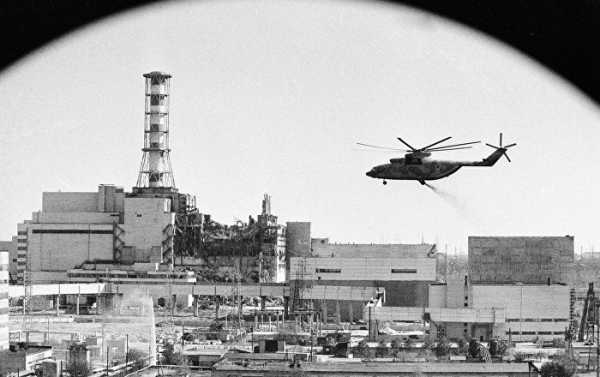
The state of Ukraine’s Chernobyl exclusion zone has seen a resurgence of public interest thanks to the success of the 2019 HBO miniseries recounting the 1986 disaster. However, some scientists have focused their attention on the odd fungus found growing in the walls of the heavily irradiated reactor in 1991, and their efforts could soon bear fruit.
The power of the mysterious black fungi which proved capable of absorbing radiation and converting it into chemical energy first found in Chernobyl could one day be used in drug form aboard the International Space Station to shield cosmonauts and astronauts from potentially deadly solar radiation, if a senior NASA researcher gets his way.
The process, known as radiosynthesis, has a number of exciting potential scientific applications.
In a 2008 paper, scientists Ekaterina Dadachova and Arturo Casadevall revealed that fungal spores similar to those found in Chernobyl go back to the Cretaceous geological period (well over 100 million years before our time), with their ability to “adapt morphologically to extreme conditions” making it possible for them to survive comfortably in high-radiation environments from Chernobyl’s reactor to space stations and even the mountains of Antarctica. The scientists revealed that the fungi were found aboard the Soviet orbital space station Mir, and in its successor, the International Space Station, as well, warning that in their present form, they were potentially harmful not only as pathogens but because of their powerful enzymatic systems, and secretion of metabolites which could degrade the structural integrity of materials inside the spacecraft.

This micrograph reveals the histopathologic changes in phaeohyphomycosis due to Wangiella dermatitidis using PAS stain
More recently, Dr. Kasthuri Venkateswaran, Senior Research Scientist at NASA’s Jet Propulsion Laboratory, who has been conducting experiments on the radiation-resistant fungi for several years, proposed that the fungi’s radiation-absorbing power could be extracted and synthesized in drug form for use as a powerful type of ‘sun block’ against toxic radiation rays.
Now, according to Popular Mechanics, the scientists are expected to share the results of their experiments in an upcoming paper, leaving the scientific world holding its breath.
Chernobyl Fungi That Started It All
Soviet scientists first discovered the unique radiotrophic fungus in Chernobyl in 1991, with the fungus found growing inside and around the power plant, including its radioactive epicenter – the core of Reactor Number 4. Dr. Dadachova and her team were the first to confirm its unique melanin properties in the 2000s.
The Chernobyl nuclear catastrophe took place on the night of April 26, 1986, and was the result of an experiment simulating a power outage carried out by deputy chief-engineer Anatoly Dyatlov. The test saw the blatant violation of numerous safety regulations, with Dyatlov ordering the shutdown of multiple computer safety systems. The experiment resulted in an uncontrolled reaction and steam explosion, followed by a graphite fire. 54 people died in the immediate aftermath of the disaster and cleanup operation, and up to 4,000 more died, mostly due to cancers, over the next two decades, according to the World Health Organization. The plant also contaminated some 50,000 square kilometres of land across northern Ukraine, and up to 20 percent of the total land area of neighbouring Belarus.
Sourse: sputniknews.com






